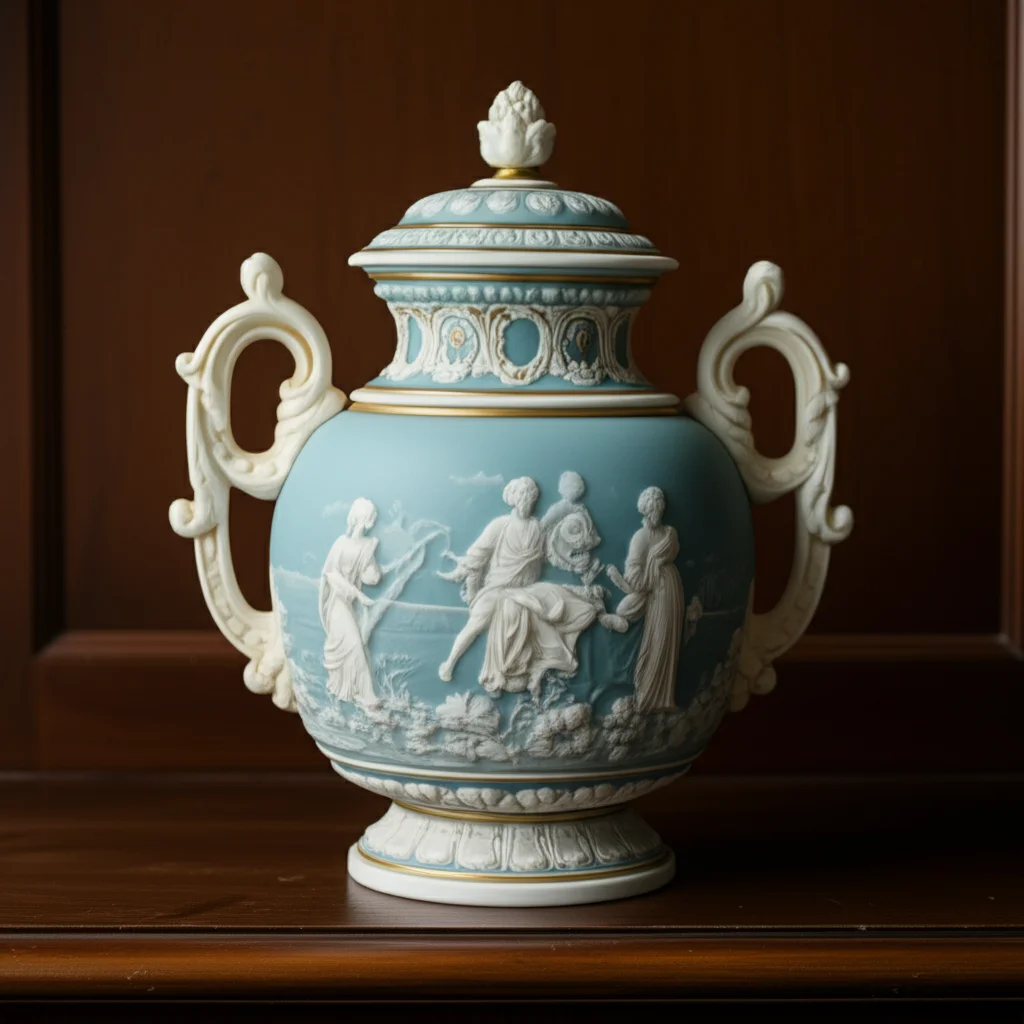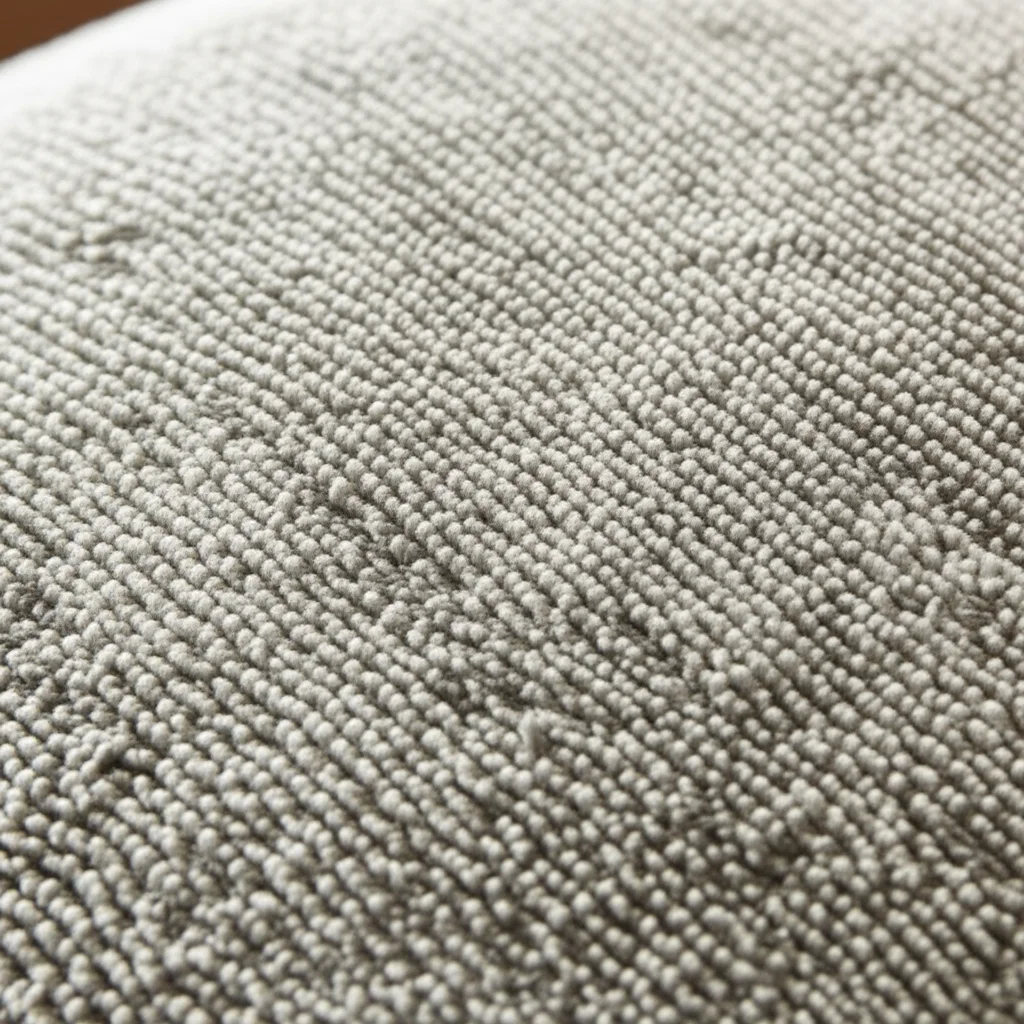· Todd Martin · Home Care · 13 min read
How To Clean Wedgwood Jasperware

How To Clean Wedgwood Jasperware Safely
Wedgwood Jasperware is beautiful. It adds elegance to any home. But like all collectibles, it gathers dust and dirt. Knowing how to clean Wedgwood Jasperware properly keeps it looking its best. This guide shows you safe and effective methods. We will cover routine dusting, handling light marks, and addressing stubborn stains. I will help you protect your cherished pieces for years to come.
Takeaway
- Use soft brushes and cloths for dusting.
- Employ distilled water and mild soap for light cleaning.
- Avoid harsh chemicals and abrasive materials.
- Address specific stains like grease or coffee with care.
- Store Jasperware correctly to prevent future damage.
To clean Wedgwood Jasperware, use a soft brush or compressed air for dusting. For dirt or light marks, gently wipe with a damp, soft cloth using distilled water and a tiny drop of mild, pH-neutral soap. Always dry immediately with another soft, clean cloth.
Understanding Your Wedgwood Jasperware
Wedgwood Jasperware is a unique type of unglazed stoneware. Josiah Wedgwood developed it in the 18th century. It features a matte finish and often has white relief designs applied to a colored body. These colors typically include classic blue, green, black, or lilac.
The unglazed nature makes Jasperware porous. This means it can absorb oils, dirt, and pigments over time. Its delicate surface also scratches easily. Therefore, gentle cleaning methods are very important. Harsh chemicals or abrasive tools can cause permanent damage. Understanding these qualities is the first step toward proper care.
I always approach Jasperware cleaning with caution. My goal is to remove grime without harming the surface or the applied decorations. This material needs a special touch. It is not like cleaning glazed ceramics or glass. You must respect its unique composition.
This delicate material holds historical value. Many pieces are antiques. Proper care ensures their preservation for future generations. Incorrect cleaning can diminish their value and beauty. I want to help you avoid these mistakes.
Essential Tools for Safe Wedgwood Jasperware Cleaning
Before you begin cleaning, gather the right tools. Using the correct supplies prevents damage to your delicate Jasperware. You need items that are soft, clean, and non-abrasive. Common household items can often do the job. However, I always recommend choosing the gentlest options.
First, you will need a very soft brush. A soft-bristled artist’s brush or a makeup brush works well. These are perfect for dislodging dust from intricate details. A can of compressed air, used carefully, can also help. Always hold it upright and at a distance to avoid propellant residue or too much force.
Next, prepare your cleaning solution. Distilled water is a must. Tap water often contains minerals that can leave deposits or streaks on the matte surface. A tiny drop of very mild, pH-neutral dish soap or pure castile soap is also useful. You need only a minuscule amount, not enough to create suds. I use just a pinpoint drop for a small bowl of water.
You will also need several soft cloths. Microfiber cloths are excellent choices. They are lint-free and absorb well. Cotton balls or Q-tips can help for small details. Always ensure they are clean and free of any residual detergents or softeners. Paper towels are too abrasive for this delicate material. Using soft tools is like giving your Jasperware a gentle hug.
Daily Dusting and Gentle Care for Jasperware
Regular dusting is the best way to maintain your Wedgwood Jasperware. This routine prevents dust from building up and bonding to the porous surface. When dust settles for too long, it can become harder to remove. It also dulls the beautiful matte finish. I dust my pieces often to keep them looking fresh.
Start by using a soft brush. Gently sweep over the entire surface, paying close attention to the raised white designs. Dust loves to accumulate in these crevices. A small, soft artist’s brush or a clean, soft makeup brush works perfectly. You want to lift the dust, not rub it into the material.
For very fine dust or hard-to-reach areas, compressed air is helpful. Hold the can upright and spray short bursts. Keep the nozzle a few inches away from the surface. This helps dislodge dust without applying too much force. Never tip the can, as this can release liquid propellant onto your piece.
After dusting, you can use a dry, soft microfiber cloth for a final gentle wipe. Lightly glide it over the surface. Do not press hard. This step helps to pick up any remaining dust particles. Regular, gentle dusting reduces the need for deeper cleaning. It is the easiest way to preserve your Jasperware’s appearance.
Tackling Light Marks and Fingerprints on Jasperware
Even with regular dusting, light marks and fingerprints can appear on your Wedgwood Jasperware. The unglazed surface easily picks up oils from skin. These marks can dull the finish and make the piece look dirty. Addressing them quickly keeps your Jasperware pristine.
First, try a simple dry wipe with a clean, soft microfiber cloth. Sometimes, this is enough to remove fresh fingerprints. Gently buff the area in small, circular motions. Always use a light touch. Avoid rubbing aggressively, as this can spread the oil or create a sheen on the matte surface.
If dry wiping is not enough, a slightly damp cloth can help. Wet a corner of a microfiber cloth with distilled water. Wring out excess water until it is just damp, not wet. Gently wipe the affected area. Distilled water prevents mineral deposits. It helps lift the oils without leaving streaks.
For stubborn fingerprints or smudges, add a tiny drop of pH-neutral soap to the distilled water. Mix it well. Dip a cotton ball or the corner of your damp cloth into this solution. Lightly dab and wipe the mark. Do not use too much soap. Rinse the area by dabbing with a separate cloth dampened only with distilled water. Immediately dry the piece thoroughly with a clean, dry microfiber cloth. Ensure no moisture remains.
Deep Cleaning Stubborn Stains on Wedgwood Jasperware
Stubborn stains on Wedgwood Jasperware require more focused attention. Due to its porous nature, Jasperware can absorb liquids and pigments. Common culprits include coffee, tea, or even grease from handling. Addressing these stains carefully is important to avoid damage. I approach these situations with patience and precision.
For grease stains, which can often appear from cooking fumes or skin oils, I recommend a very mild degreasing agent. You can find guidance on tackling similar issues, like how to clean grease stains on other household items. However, for Jasperware, the approach must be much gentler. Mix a small amount of liquid dish soap – the absolute mildest, purest kind – with distilled water. Use a cotton swab dipped in this solution. Gently roll the swab over the grease spot. Do not rub. The goal is to lift the grease, not push it deeper.
For organic stains like coffee or tea, the approach is similar to how you might tackle how to clean coffee stains on fabrics, but again, with less aggression. Try a very dilute solution of hydrogen peroxide (3% concentration, diluted further with distilled water). Test this on an inconspicuous area first. Apply it with a cotton swab. Let it sit for a very short time, then blot gently. Rinse by dabbing with distilled water and dry immediately. Speed is key to prevent further absorption.
If mold or mildew spots appear, often due to humidity, these can be tricky. While the links for how to clean mold from grout or how to clean mold off brick offer insights into mold removal from porous surfaces, Jasperware needs extreme care. A very dilute bleach solution (1 part bleach to 20 parts distilled water) can be used, but only as a last resort and with extreme caution. Apply with a cotton swab. Immediately rinse thoroughly with distilled water and dry. Remember, this is a delicate material. Always prioritize gentle methods.
Removing Discoloration and Yellowing from Jasperware
Over time, Wedgwood Jasperware can develop a general discoloration or yellowing. This often happens from accumulated dust, environmental pollutants, or exposure to sunlight. It affects the overall appearance. Restoring its original color requires careful steps. I find that a gentle approach yields the best results.
Start with a thorough dusting. Use a soft brush and compressed air to remove all loose particles. This ensures you are working only on the actual discoloration. Sometimes, removing surface dust reveals a brighter color underneath. This is the first and easiest step.
Next, prepare a gentle cleaning bath. Fill a clean basin with lukewarm distilled water. Add a very tiny amount of pure, pH-neutral soap. The water should feel slightly soapy, not sudsy. Submerge the Jasperware piece carefully. Let it soak for no more than 10-15 minutes. This helps loosen embedded dirt. This technique is similar to how one might approach general cleaning of durable kitchenware, as discussed in articles about caring for specific materials like how to clean a baking stone, but always remember Jasperware’s unique delicacy.
After soaking, use a soft artist’s brush or a very soft toothbrush. Gently brush over the discolored areas. Focus on the white relief designs, as these often show yellowing most prominently. Rinse the piece under a gentle stream of distilled water. Make sure all soap residue is gone. Immediately dry the piece thoroughly with a soft, lint-free microfiber cloth. Ensure no water spots remain. For large pieces, gently dabbing excess water and then allowing air drying in a clean, dust-free area can be helpful.
Restoring Luster and Protecting Your Jasperware
After cleaning, you want to ensure your Wedgwood Jasperware retains its beauty. While Jasperware has a matte finish, proper protection helps maintain its original luster and prevents future issues. It is about preservation. I believe in taking proactive steps to safeguard these beautiful items.
Once your Jasperware is completely dry, you can consider a very light buffing. Use a clean, soft, lint-free microfiber cloth. Gently rub the surface in small, circular motions. This helps to bring out the natural subtle sheen of the unglazed material. Do not use waxes or polishes. These can clog the porous surface and attract more dirt. They can also alter the desired matte finish.
For long-term protection, proper display and storage are key. Display Jasperware away from direct sunlight, which can cause fading or further yellowing over time. Keep it away from heat sources and high humidity. Humidity can encourage mold growth, while extreme temperature changes can stress the material. Think about how you protect other delicate surfaces, like ensuring a stone floor is sealed to prevent stains and damage. While Jasperware isn’t sealed, the principle of environmental protection is similar.
When storing Jasperware, wrap each piece individually in acid-free tissue paper or unbleached cotton. Store them in a stable environment. Avoid stacking pieces directly on top of each other. This prevents chips and scratches. Proper protection is the final step in comprehensive care.
What to Avoid When Cleaning Wedgwood Jasperware
Knowing what not to do is as important as knowing what to do when cleaning Wedgwood Jasperware. Incorrect methods can cause irreversible damage. I always stress these points to protect your cherished collectibles. Avoiding common mistakes keeps your Jasperware pristine.
First, never use abrasive cleaners or scouring pads. These include harsh powders, steel wool, or even rough sponges. They will scratch the delicate matte surface. This damage is permanent and ruins the finish. The white relief designs are also easily abraded.
Second, avoid harsh chemical cleaners. This includes strong detergents, ammonia-based cleaners, or anything with strong acids or alkalis. These chemicals can discolor the Jasperware body or etch the delicate surface. They can also strip away any residual surface protection or interact poorly with the unglazed ceramic. Even if you’re cleaning tough messes like oil out of an oven, you wouldn’t use highly abrasive tools on delicate surfaces, and the same principle applies here.
Third, do not put Jasperware in a dishwasher. The high heat, harsh detergents, and vigorous water jets will cause severe damage. The rapid temperature changes can crack the material. The detergents can leave permanent cloudy residues or cause discoloration. Dishwashers are too aggressive for this delicate art form.
Fourth, avoid excessive scrubbing or rubbing. Gentle dabbing and light wiping are always preferred. Too much pressure can wear down the surface. It can also dislodge the applied white relief details. Always use a light hand. By avoiding these pitfalls, you ensure your Jasperware remains beautiful.
FAQ Section
Can I use vinegar to clean Wedgwood Jasperware?
No, I do not recommend using vinegar. Vinegar is an acid, and its acidity can etch the delicate, unglazed surface of Jasperware. It might also react with the color of the body or leave permanent marks. Stick to distilled water and mild soap for safe cleaning.
How do I remove black marks or scuffs from Jasperware?
For black marks or scuffs, try a gentle eraser, like a white art eraser, very lightly. Test it in an inconspicuous spot first. Do not press hard. Follow up with a damp cloth wipe to remove any eraser residue. If the mark is deeply embedded, professional restoration might be necessary.
How often should I clean my Wedgwood Jasperware?
Regular dusting should be done weekly or bi-weekly, depending on dust accumulation. Deep cleaning for light marks or fingerprints should happen as needed. Stubborn stains or discoloration might require a more intensive, but still gentle, cleaning less frequently, perhaps once a year or every few years.
Can water damage Wedgwood Jasperware?
Yes, water can cause issues if not used properly. Tap water contains minerals that can leave water spots or mineral deposits. Always use distilled water for cleaning. Also, never leave Jasperware soaking for long periods or allow it to air dry without thoroughly wiping it down, as this can cause spots or encourage mold.
Is professional cleaning an option for very old or damaged Jasperware?
Yes, for very old, heavily stained, or damaged Jasperware, professional restoration is often the best option. Specialists understand the material and have access to advanced, safe techniques. They can address issues like severe discoloration, chips, or cracks. I recommend seeking a reputable conservator for valuable pieces.
Conclusion
Cleaning Wedgwood Jasperware does not have to be difficult. It requires care and the right approach. By understanding its delicate, unglazed nature, you can protect these beautiful collectibles. Remember to use only soft tools, distilled water, and very mild, pH-neutral soap. Avoid harsh chemicals, abrasive materials, and dishwashers.
Regular dusting helps keep your pieces pristine. For light marks, a damp cloth works well. Stubborn stains need a targeted, gentle method, always with extreme caution. Proper storage and display also play a vital role in preserving their beauty for years to come. I hope this guide gives you confidence to maintain your Wedgwood Jasperware. If you need more advice on specialized cleaning or caring for other delicate items, explore our other comprehensive guides on home essentials.
- Wedgwood Jasperware
- antique care
- ceramic cleaning
- collectible maintenance
- delicate cleaning
- stain removal
- home care





